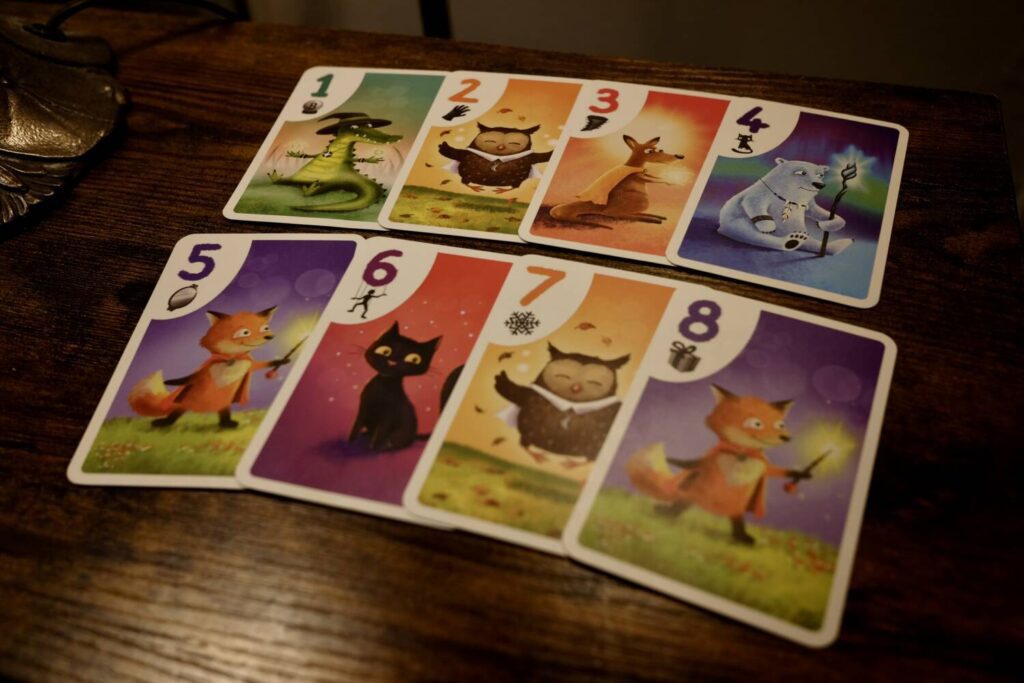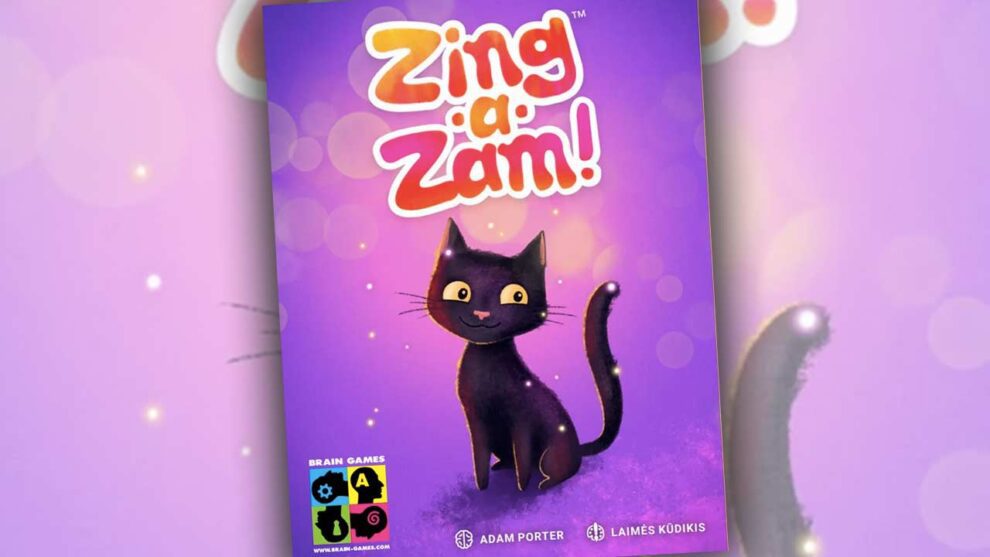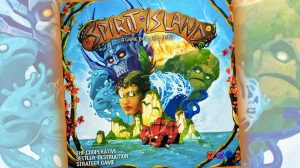Disclosure: Meeple Mountain received a free copy of this product in exchange for an honest, unbiased review. This review is not intended to be an endorsement.
It has long been my experience that children struggle with trick-taking. In the two years I’ve been teaching children games professionally, they’ve never once taken to a trick-taker. Despite being relatively straightforward games on the outside, trick-taking requires you to keep track of a number of different things in order to have any sort of satisfying experience. You have to think about possible permutations of play from everyone else, you have to think about what cards you don’t have, you have to think about what cards have already been played, and you have to think about the different orders in which you might play your cards and what those different orders might do for you. It’s a lot!
Zing-a-Zam, a trick-taking game for children from publisher Brain Games and designer Adam Porter, has all this in mind. Each player gets an identical set of cards, numbered 1-8. Each value has its own effect, which triggers the moment it’s played. The wrinkle here, which speeds up playtime and cuts down on difficulty making decisions, is that every player holds their cards backwards. Your entire hand is fanned out so everybody but you can see. When your turn to play a card comes, you pick a card at random and lay it down on the table.
Suffice it to say, this is meant to be a silly game for silly people, not some sort of masterclass on the nuances of trick-taking. Zing-a-Zam subtly massages the basics into the minds of its younger players, and it does that pretty well.

The Bad, The Other Bad, and the Worsely
My first game of Zing-a-Zam was with four other adults, and we liked it. A quick, silly game that seemed like an excellent introduction to trick-taking for kids. Exactly what it says on the box. Warm thoughts all around.
My second game of Zing-a-Zam was with a group of seven year olds. The box says 6+, so that’s prime audience. The good news? The kids had a good time. The bad news? They never seemed to really understand anything that was going on. The other bad news? They found it impossible to understand the symbols, so I had to more or less play the entire game for them.
That meant I came away from a fifteen-minute card game feeling tired. More importantly, there’s a point at which things are on rails in a way that divorces the kids of any sense of agency, which is a big part of what they get out of most games. My having to keep everything straight for them certainly didn’t help the kids feel invested.
I suspect the kids had a hard time keeping the effects straight because the iconography isn’t very helpful. Each player’s hand has identical art on each card, with a different icon below each number. The icons are smaller, and fairly anonymous. I understand going for a theme, such as this is themed, but I wonder if the kids would have an easier time if Zing-a-Zam had been styled as an abstract card game, with illustrations on each number more or less depicting what it means.
The true death knell came when the game was done. The children unanimously didn’t want to play again. Children are an affable but discerning audience. I think I wrote about this in my review of Mysterious Dungeon—to be honest, I am too lazy to check. I’ve lost count of the number of times I’ve played a game with kids where everyone was laughing, having a blast, and then at the end I’d ask what they thought and they’d say, sincerely, “It was okay.”
A coworker borrowed my copy to play with some kids later the same day. I wasn’t there for that game. All I know is that she came back about 20 minutes later, handed me the box, and said “They hated it.”
I don’t think Zing-a-Zam is truly a children’s game. I think it might, however, be a child’s game. One or two kids playing with a table of adults is where this game is likely at its best. The child feels included, and the adults are having a good enough time. I can’t test that theory, but I feel pretty good about it. The real trick—heh—here is that Zing-a-Zam has stepped into a market space where nothing else exists. There aren’t loads of trick-takers for kids on the market. If that’s what you’re looking for, you’ve found it! And it is harmless fun. You’ll just want to make sure the adults outnumber the kids at the table.











Add Comment